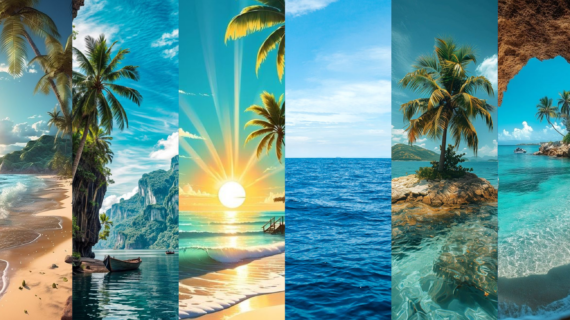Unreal Engine 5 for Motion Graphics Designers — Unreal Engine has long been a powerhouse in the gaming industry, but its capabilities extend far beyond creating immersive virtual worlds. In recent years, it has emerged as a formidable tool for motion graphics designers, revolutionizing the way we create stunning visual effects and animations. Unreal Engine 5, the latest iteration of this powerful engine, offers a plethora of features and tools that are specifically designed to empower motion graphics artists. Let’s delve into how Unreal Engine 5 can elevate your motion graphics projects to new heights.
Why Unreal Engine 5 for Motion Graphics?
- Real-time rendering: Unreal Engine 5 enables you to see your animations come to life in real-time, allowing for immediate feedback and iterative design.
- Advanced materials and lighting: Create incredibly realistic and visually stunning materials and lighting effects, giving your animations a cinematic quality.
- Procedural generation: Automate repetitive tasks and create complex, dynamic scenes with ease using procedural generation tools.
- Integration with other software: Seamlessly integrate assets from popular 3D modeling and animation software like Maya, Blender, and Cinema 4D.
- Virtual production: Create virtual sets and environments for live-action productions, opening up new possibilities for storytelling and visual effects.
Key Features and Benefits
- Nanite: This groundbreaking technology allows you to import incredibly detailed 3D assets without sacrificing performance.
- Lumen: Unreal Engine 5’s global illumination system provides realistic lighting and reflections in real-time.
- MetaSounds: Create interactive and dynamic audio experiences with MetaSounds, a visual scripting system for audio.
- Niagara: A powerful visual effects system for creating stunning particle effects and simulations.
- Sequencer: A non-linear editing tool for creating cinematic sequences and animations.
How Motion Graphics Designers Can Benefit
- Enhanced creativity: Unreal Engine 5 provides a vast array of tools and features that inspire creativity and allow you to experiment with new ideas.
- Increased efficiency: Real-time rendering and automation tools streamline the production process.
- Higher-quality visuals: The engine’s advanced rendering capabilities enable you to create stunning, photorealistic animations.
- Versatility: Unreal Engine 5 can be used for a wide range of motion graphics projects, from short animations to complex visual effects for film and television.
Getting Started with Unreal Engine 5
- Learn the basics: Start by familiarizing yourself with the Unreal Engine interface and basic concepts.
- Explore tutorials and resources: There are numerous online tutorials, courses, and communities dedicated to Unreal Engine.
- Experiment with different features: Don’t be afraid to experiment and play around with the various tools and features.
- Join the community: Connect with other Unreal Engine users to learn from their experiences and share your knowledge.
Conclusion
Unreal Engine 5 is a game-changer for motion graphics designers, offering unprecedented levels of creativity, realism, and efficiency. By leveraging its powerful features, you can create stunning animations and visual effects that captivate audiences. If you’re looking to take your motion graphics skills to the next level, Unreal Engine 5 is definitely worth exploring.
Read More:










